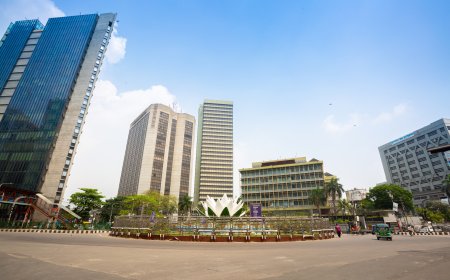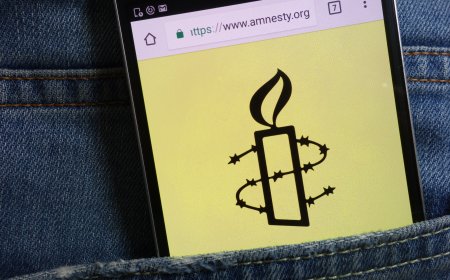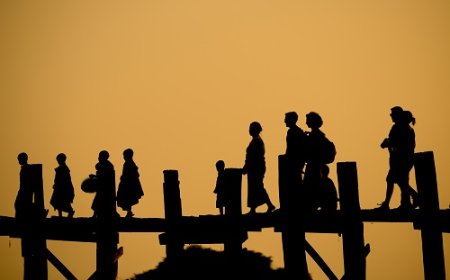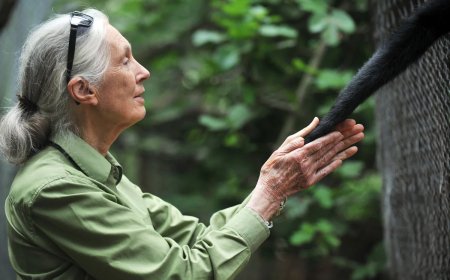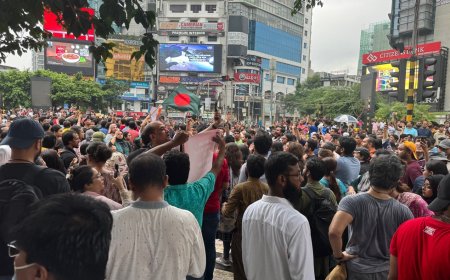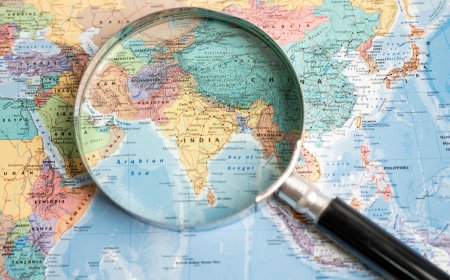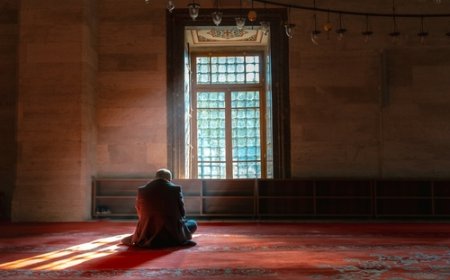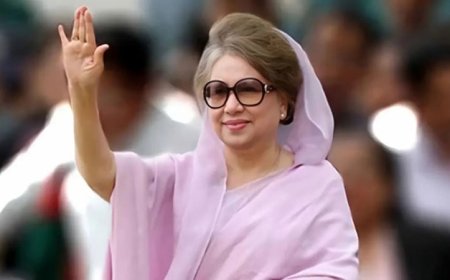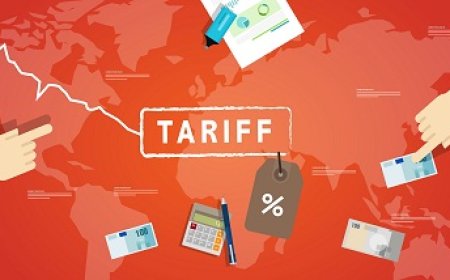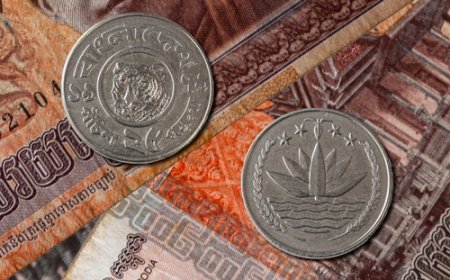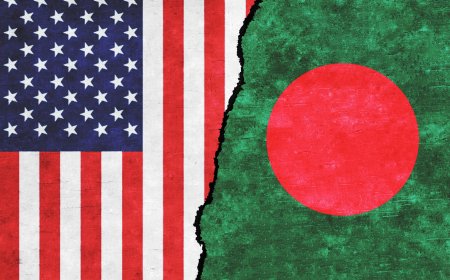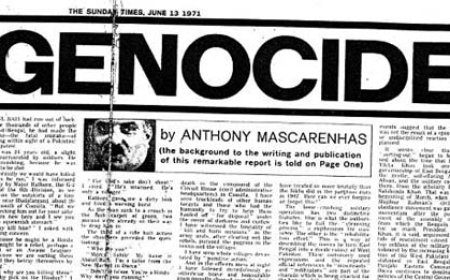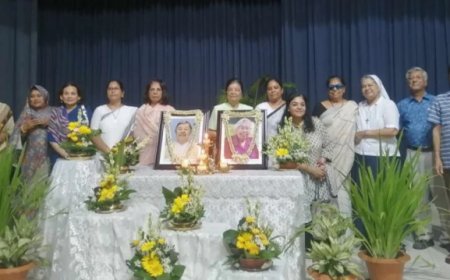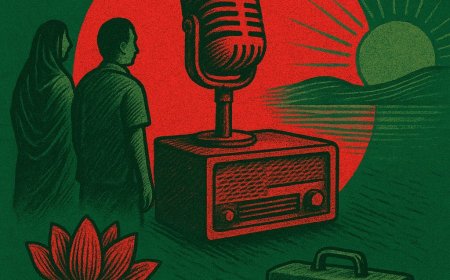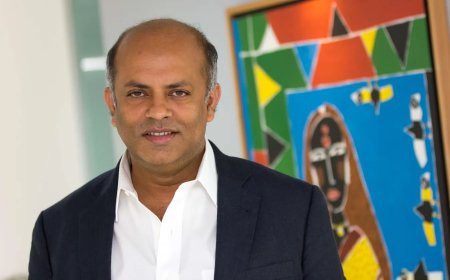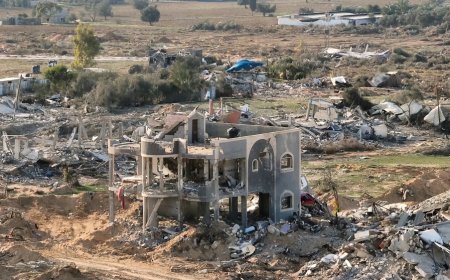What Bangladesh Can Learn from Dr. Jane Goodall
Her warning that humanity has only a narrow window to reverse the degradation of Earth’s life-support systems, and that unless societies change their ways of living and their overall strategy for economic development, civilization will run out of time, is especially relevant to Bangladesh
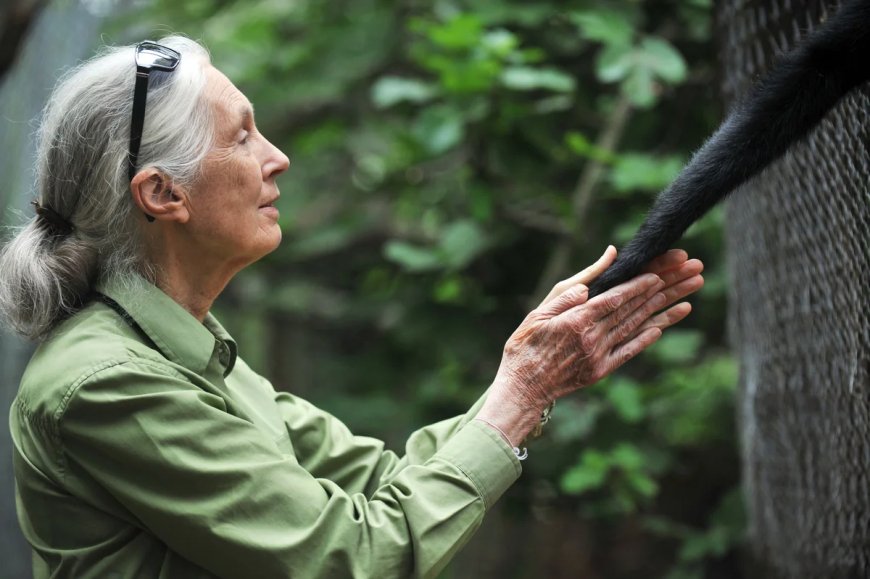
On September 24, on the sidelines of the much-hyped 80th United Nations General Assembly in New York City, Dr. Jane Goodall took part in a panel discussion at the Bloomberg Philanthropies Global Forum. It was one of her final public appearances. She passed away on October 1.
Her remarks centred on a single theme: how microfinance can advance ecological preservation. She articulated the business case for investment in biodiversity initiatives and described how fortunate she felt to have met Dr. Muhammad Yunus, now Chief Adviser of Bangladesh’s interim government.
Dr. Yunus’ thought leadership, which has driven global institutional reforms to the overarching architecture of social finance and lending principles, inspired her and offered a template for linking capital, sustainable entrepreneurship, and women’s livelihoods in her work over recent decades.
Dr. Goodall recalled that, at Dr. Yunus’ invitation, she visited Bangladesh and met three rural women who had received microloans from Grameen Bank. In her words, the loans gave these women a sense of financial autonomy and a vested stake in the small businesses they established with capital that no traditional banking institution would have extended. Their ventures included simple enterprises such as chicken farming. She then traced how Dr. Yunus’ Grameen model spread across Africa, where microloans enabled rural women to build conservation-oriented businesses and secure steady incomes. She helped socialise and scale this approach by directing capital to community projects linked to primate conservation and other environmental efforts.
Dr. Goodall and Dr. Yunus were close acquaintances and friends who often found themselves in the same rooms at various international conferences, and her connection to Bangladesh deepened through that personal rapport. She first visited in the 1990s, drew on Grameen’s model of women’s empowerment, and began to weave microcredit interventions into community-based conservation projects elsewhere. In 2003, as a United Nations Messenger of Peace, she visited Bangladesh again to work with both the Bangladesh Centre for Advanced Studies and Grameen Bank.
Through her youth program, Roots and Shoots, Bangladeshi schools joined initiatives such as the Pile It Up recycling project and clean up challenge. Dr. Goodall became an early pioneer of what civil society organizations now present as the go to strategic approach to tackling social policy problems that are not constrained by borders, such as forest fires or species extinction: local action, linked to an international network, to tackle issues that governments alone cannot solve.
In public, she repeatedly cited Grameen Bank, and during the years when the now-deposed Awami League regime pursued legal actions against Dr. Yunus, perceived as stemming from former Prime Minister Sheikh Hasina’s personal vendetta against Bangladesh’s only Nobel laureate, Dr. Goodall added her voice to letters and advocacy efforts in his defence alongside the likes of former American President Barack Obama and former United Nations Secretary-General Ban Ki-moon.
It is now evident to many in Bangladesh that Dr. Yunus is perhaps not best suited to the role of head of government. To his credit, he has never claimed otherwise. In fact, he has said repeatedly that politics is outside his comfort zone, a reality reflected in his failures to fulfill many of the core duties of oversight of public administration and governance since taking over the ship of state within the context of a shattered state apparatus after the 2024 mass uprising.
Setting that aside for a moment, Dr. Goodall’s perception of Dr. Yunus points to a lesson for Bangladesh: the figures whom the world collectively acknowledges as leading public intellectuals of this day and age continue to find his vision for a better world and his groundbreaking work on microfinance genuine, forward-looking, compelling, and disruptive to an inequality-reinforcing transnational banking system.
Dr. Yunus has spent his life stress testing the boundaries of conventional economics, pushing ideas that sound utopian until they work in practice, and he communicates them with unflinching clarity. Scholars like Dr. Goodall and Dr. Yunus deliberate over issues on century scale horizons, so their ideas can feel distant from today’s realities. Yet this long range lens is often what pulls new possibilities into view and attracts the talent, money, and coalitions needed to make them real, if not today, then down the road. Without that kind of problem defining imagination, paired with material evidence from the field, the world would be smaller in ambition and poorer in direction.
For 15 years, Bangladesh’s ruling elites made a short-sighted political decision to sideline and demonize Dr. Yunus, pursuing legal harassment rather than leveraging his stature to strengthen the country’s reputation and brand abroad and use his connections for the betterment of the country. That choice reflected a corrosive political culture divorced from the national interest. Instead of converting Dr. Yunus into a diplomatic asset, the Awami League government treated him as a rival to be hassled. The outcome was reputational damage for the Hasina government at home and overseas, and a sense of disbelief writ large about a country undermining one of its greatest assets.
On Dr. Goodall herself, there is much to learn from her work. First, her trailblazing research in Tanzania transformed primatology, showing that wild chimpanzees make and use tools for termite fishing, hunt and eat meat, transmit local cultures, form complex social bonds, and display distinct personalities. Her long term, name based fieldwork blurred the perceived line between humans and other animals and reshaped interdisciplinary research methods, textbooks, and ethics across the behavioural sciences. Importantly, Dr. Goodall has given the world a clearer view of why humans behave as they do, influencing fields from biology to modern day behavioural economics.
Second, her community led conservation model changed practice on the ground throughout the world. Through the Jane Goodall Institute and place based programs spanning arenas such as education, public health, river protection, reforestation, land use, and women’s livelihoods, she proved what is now convention: wildlife protection efforts endure only when local communities living in and around intervention zones see tangible, long term social and economic gains.
Third, she was a steady public voice for robust legal and ethical safeguards for great apes and their habitats. She helped turn the tide against invasive chimpanzee research and contributed to keeping habitat protection and animal welfare on domestic and international public policy agendas. Via her Roots and Shoots network, she rallied millions of young people in dozens of countries to carry out concrete conservation and community work, forging what has now become an international consensus on both the macroeconomic and climate imperatives for environmental protection.
Fourth, her visibility in her field shifted gender dynamics in science. When she started her work in 1960, women were largely absent from field primatology. Working alongside Dian Fossey in Rwanda and Birute Galdikas in Indonesia under the mentorship of Louis Leakey, she helped make women’s leadership in primate research commonplace. Over the following decades, women came to direct long-term research stations, lead major conservation organizations, edit leading academic journals, and chair professional environmental societies. Graduate pipelines shifted as well, with women forming the majority in many primatology programmes and professional memberships.
Fifth, she helped turn science into public knowledge at scale. Together with Sir David Attenborough, and through platforms such as National Geographic television, she brought field science into people’s homes. That broadcast presence made complex ecological ideas vivid and personal, raised baseline scientific literacy, and expanded public support for conservation policies. Viewers learned to recognise species, behaviours, and habitats, which made the case for protection substantive. The combination of captivating storytelling, visual evidence, and repeated exposure built a shared language for nature. Public education of this kind multiplied the impact of her research and advocacy by cultivating citizens who understood the stakes and were prepared to act.
Those five threads point to three key lessons for Bangladesh that follow from Dr. Goodall’s example and speak to pressures in the Sundarbans, at Rampal, and along rivers like the Piain. First, conservation efforts leave a lasting impact when household economics and habitat health move in tandem rather than in siloes. In forest edge areas of Khulna and Satkhira, cyclones, storm surges, embankment breaches, and saltwater intrusion wipe out crops, damage homes, and reduce fishing days. When that happens, rural families are pushed deeper into the forest to collect honey, fuelwood, or crabs, which raises the chance of encounters with endangered species such as tigers.
Where patrols are regular and village tiger teams operate, retaliation killings decline and drive backs are safer, meaning tigers are pushed back into the forest without harm. Recent camera trap surveys in the Sundarbans show a gradual rise in tiger numbers compared with 2015 and 2018, consistent with reliable patrolling and faster conflict response. The pattern matches what Dr. Goodall argued for decades: if daily income and personal safety do not require entering core habitat, apex species, such as tigers, can recover gradually and villages can cope better after cyclones and floods.
The second lesson is institutional, at the junction of ecology and industry. Dr. Goodall’s research earned credibility because she returned to the same forest with the same methods year after year, which made the evidence comparable and the trends real. The Sundarbans needs the same discipline from regulators, who should treat the ecological baseline as the first limit on operations, not an afterthought. Experts have reminded Bangladeshi authorities that the Rampal power plant’s operating landscape must be judged against the mangrove forest’s World Heritage values.
That requires long runs of like for like data on water quality, air, and forest health, not one off studies. The trade off of ignoring this approach is noticeable at other natural sites. At Shada Pathor in Sylhet, heavy machines have stripped riverbeds despite formal restrictions and court directives against mechanised extraction, leaving tourism to coexist with scarred channels and unsafe pits.
The third lesson is simple but consequential: public understanding drives consent and buy in for conservation efforts. Bangladesh has a pre-existing template it can adapt for this purpose. In the 1970s and 1980s, former President and physician Dr. Badruddoza Chowdhury hosted a regular program on Bangladesh Television to provide medical guidance and public health tips in everyday language. The format was consistent. The messenger was trusted. The language used was Bengali. The advice was extremely practical. Similarly, the Meena cartoon played a significant role in imparting important messages to children about gender rights, child rights, public health, and education, helping to build social habits at scale, particularly in rural and agrarian communities.
Environmental communication can follow the same playbook. A recurring slot on Bangladesh Television for Bangladeshi scientists and conservation practitioners can help communicate what is changing in the natural world and why it matters to the country’s survival and economic future. Clipping those segments can extend their reach on social media without losing the benefits of a single, authoritative source. That is how evidence can move from reports to public knowledge, and how a broadcast centre of gravity can build the confidence needed to discuss, support, and push for conservation and broader environmental protection initiatives as public policy priorities.
Environmental protection and the prioritizing of evidence informed climate policies are slipping down the priority list in some major economies, driven in part by affordability pressures on large swathes of the global population and, more sharply, by climate and science denial led by American President Donald Trump. Dr. Goodall warned of the eerie truth that human beings are not exempt from extinction, and that while humans may be the most intellectual animals to walk the planet, they are not intelligent per se because intelligent creatures do not destroy their only home.
Dr. Yunus has advanced a parallel warning through his vision for a World of Three Zeros, urging a rethinking of how societies design economic systems and which macroeconomic objectives to value more over time. In Bangladesh, many dismiss that vision because it arrives during one of the country’s most difficult economic and political periods since independence, yet the message matters and will matter for decades to come. Voices like Dr. Goodall’s and Dr. Yunus’ have kept environmental realities and social policy needs in public view and sustained the pressure needed for course correction at a global level. One hopes they have successors to carry on that work.
Dr. Jane Goodall’s life was well lived. She was one of those larger-than-life figures who not only moved the needle but also transformed how humanity thinks about the natural world and the environment. Humanity owes her an immense debt of gratitude for advancing the limits of scientific understanding and for democratizing science as a discipline. May she rest in eternal peace.
Mir Aftabuddin Ahmed is a Canada-based Public Policy Columnist with more than 140 published articles across Bangladeshi and Canadian media and policy outlets. He currently serves as a Policy Development Officer with the City of Toronto. He can be reached at mir.ahmed@mail.mcgill.ca. The views expressed are his own.
What's Your Reaction?







